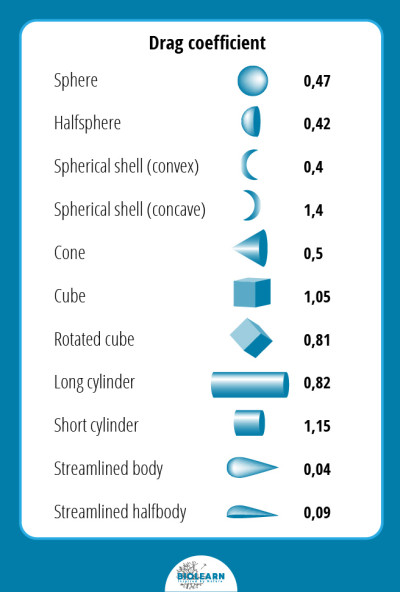Streams
How streamlined are birds? This activity allows pupils to tests different shapes and discover why animals adapt their shape.
Age Group: 9-12 age years
Duration: 30 minutes
Biomimicry Connection:
As written in the beautiful beaks biomimicry exemplar, we can learn from the kingfisher’s beak how to make fast and less noisy trains. This activity also shows that the shape of objects matters when they are moving in different mediums (air or water).
Activity Details:
Tools and Materials
- Everyday objects, with different shapes
- circular bowl (e.g., mixing bowl - metal or plastic)
- square tub (e.g., snack box
- wood (chopping) board (can be used with both a flat and an edge)
- pipe (approx. 10 cm long, 2 cm diameter)
- sphere (ball, but it should be heavy, e.g., a tennis ball)
- wedge shape (e.g., a toy boat - the main thing is the streamlined nose or a door wedge)
- Fan or high-powered hair dryer
Preparation
- This activity can be carried out anytime, either indoors or outside. Assemble the materials, ensuring there is one set of equipment for each team of 3-4 pupils.
Description
With this activity, pupils will experience how the shape of objects affect how they move through air and water. The location can be: 1) the shore of living water (a stream is the best, but the task also works in the case of a lake), 2) the classroom.
Experiment 1
- Divide pupils into groups of 3-4 per group. Each small group receives the tools necessary for the activity. If you do not have sufficient equipment to give a full set to each group, you will need to ensure equipment is rotated between the groups.
- Explain to pupils that they will test which object moves the easiest through water. Ask them to make a table listing each object down one side, and then add two columns for prediction and result. Pupils need to number their objects in the predication column starting from 1 for the easiest to move.
- Ask the teams dip their objects into the water one by one and move them forward. If you are doing this in a stream, it may be enough just to hold the objects in place. Ask pupils to record their results in their table. Ask the following:
- Is it easy or hard to push?
- How big a wave does it make? Can you record this using a camera phone (collect evidence)?
- Which object is the easiest and which is the hardest to move?
- Is there any connection between the shape and the difficulty of moving it? If so, what is it?
Experiment 2
- Turn on a powerful hair dryer or fan (or go outside if it is a windy day). A suitable one that blows strong.
- Ask pupils take turns trying to bring their palms closer to the hair dryer/fan in the air stream, first with the flat side and then with the edge.
- When is movement easier? How can we move better in high winds and drafty places: if we go against the flow or if we turn to the side?
Explanation
Everyone has the experience of running into the water, noticing the resistance caused when entering the water… perhaps even falling over because of this. Or perhaps walking in a river with a strong current and feeling the push of the water. The same happens if we use an umbrella on a windy day; it is difficult to move with it in a stormy wind, if the wind blows under it, it can also be turned inside out.
The explanation for the phenomenon is that objects moving in water or air are subject to a braking force: the particles of air and water collide with the object, thereby pushing it. The force that air or water exerts on an object moving in it is called drag. The drag also depends on the shape of the objects. The smaller the surface area the object has in contact with the air or water during movement, the easier it can move through it. The more force the medium (air or water) exerts on the object, the more force must be applied to move the object.

Additional Information
Learn more about drag (read here).